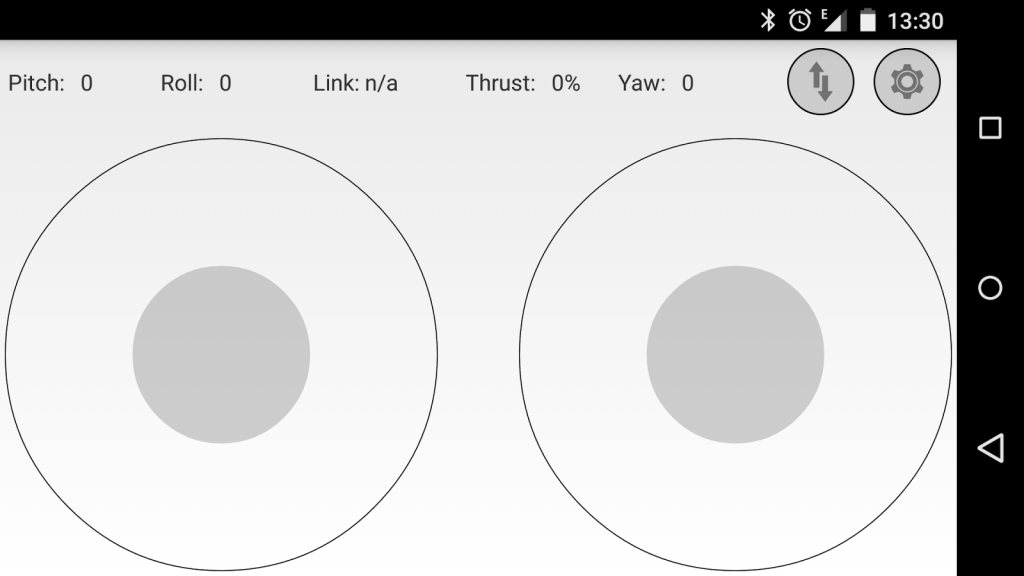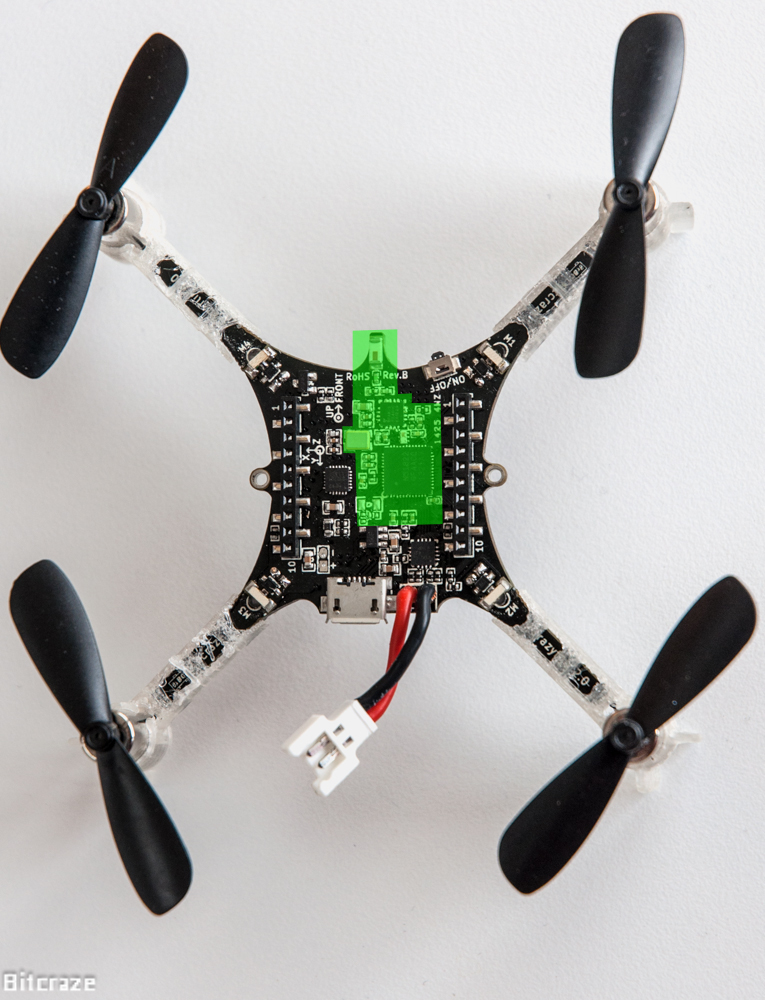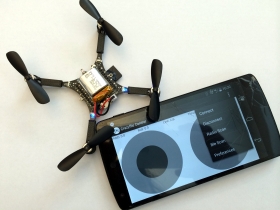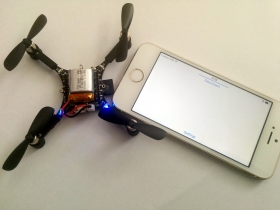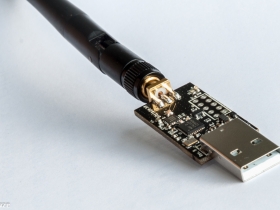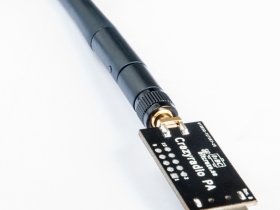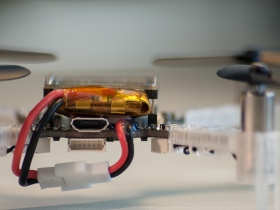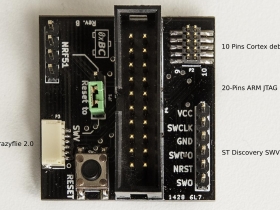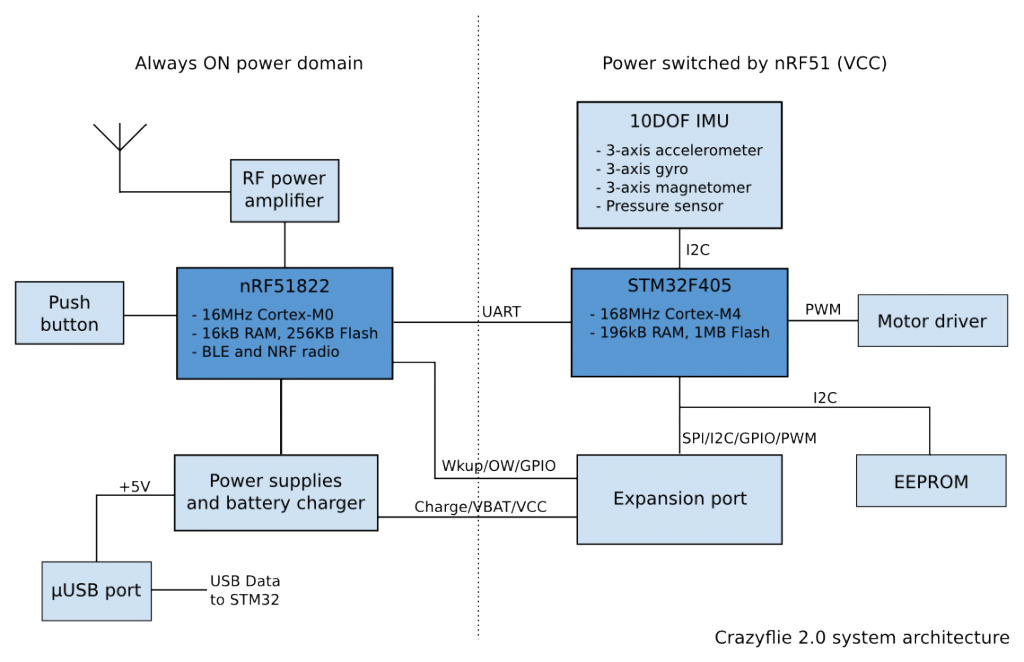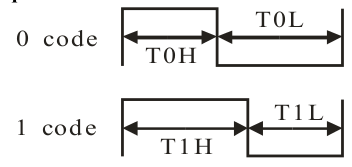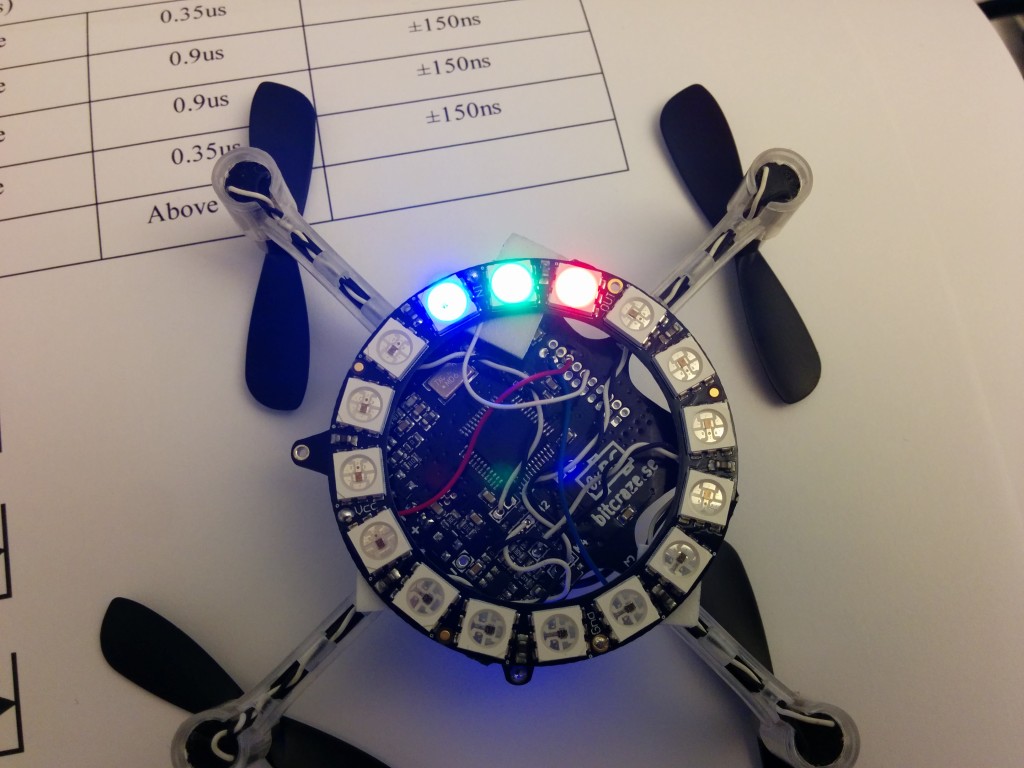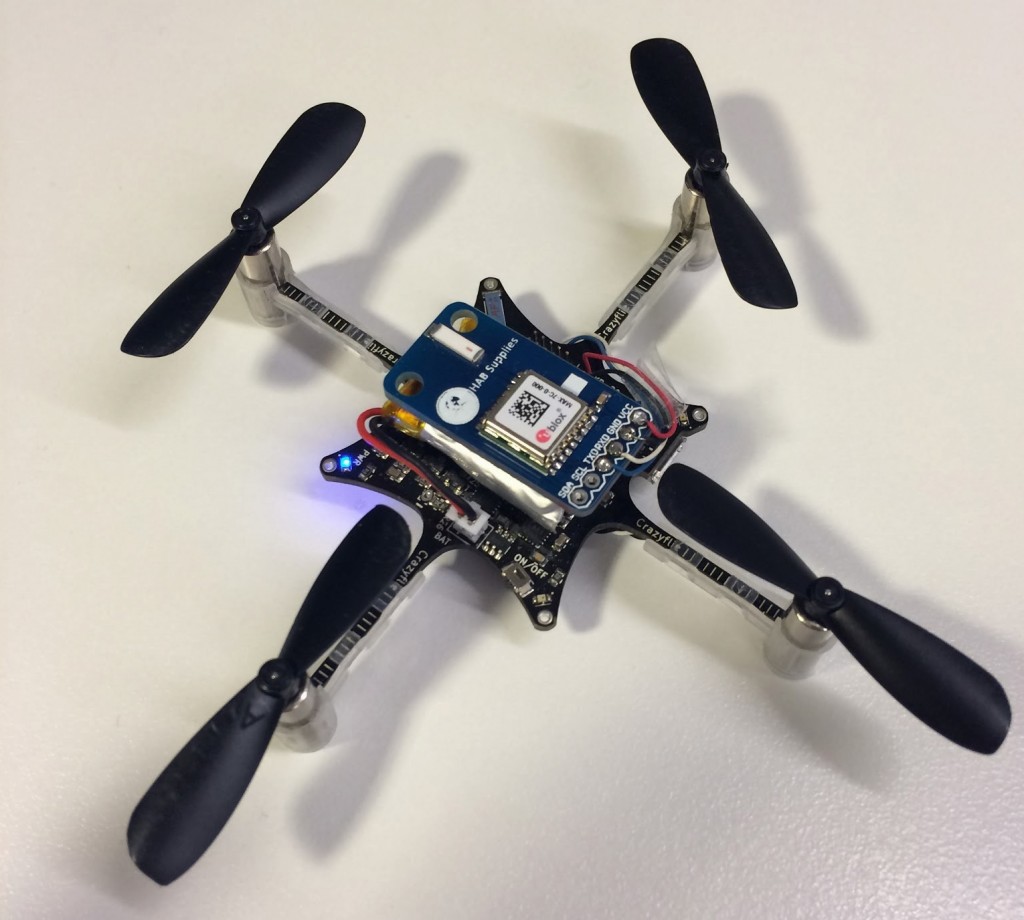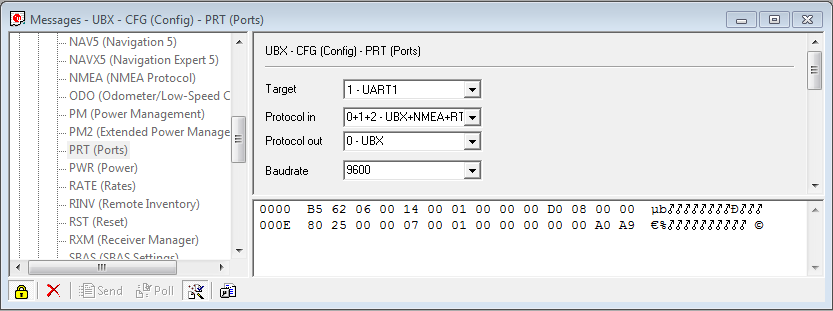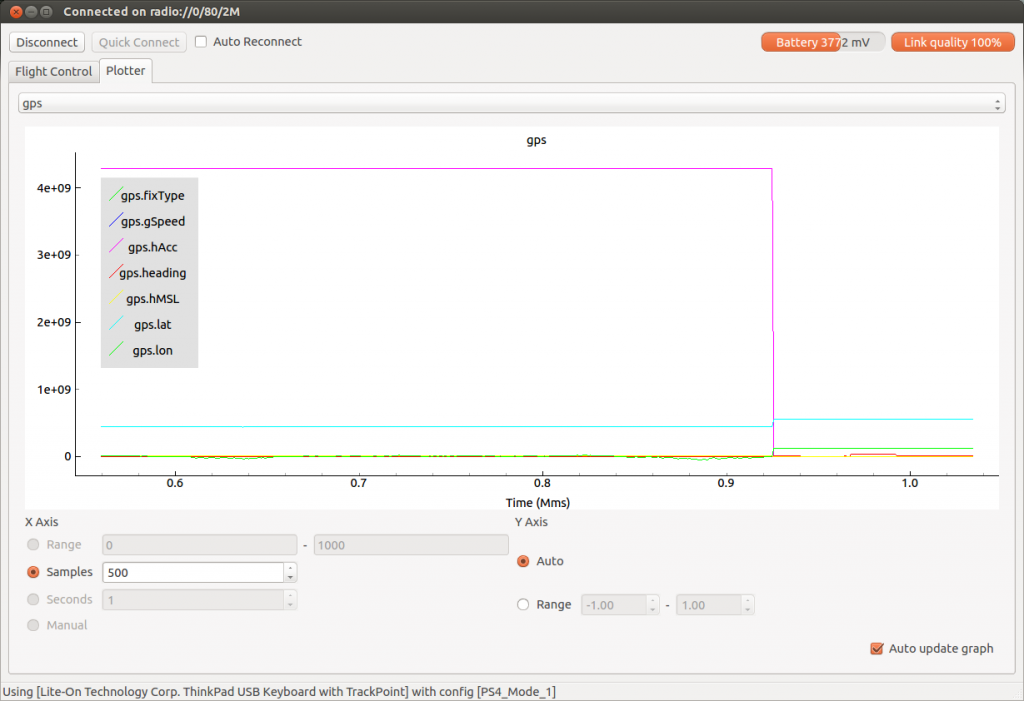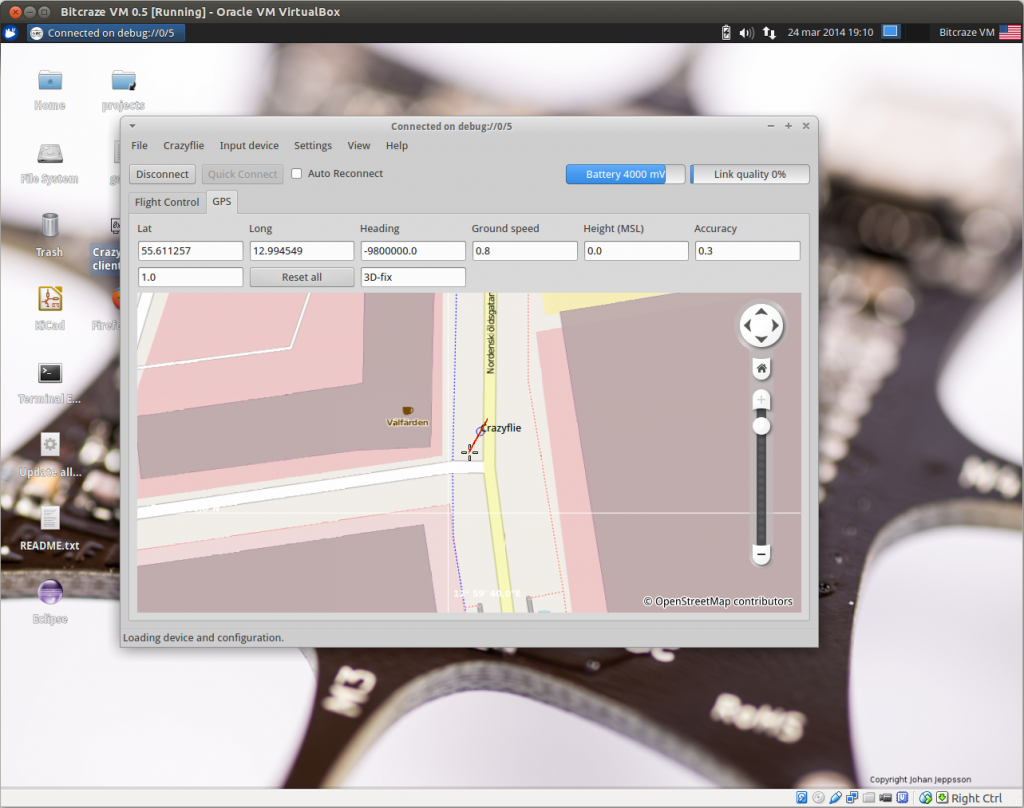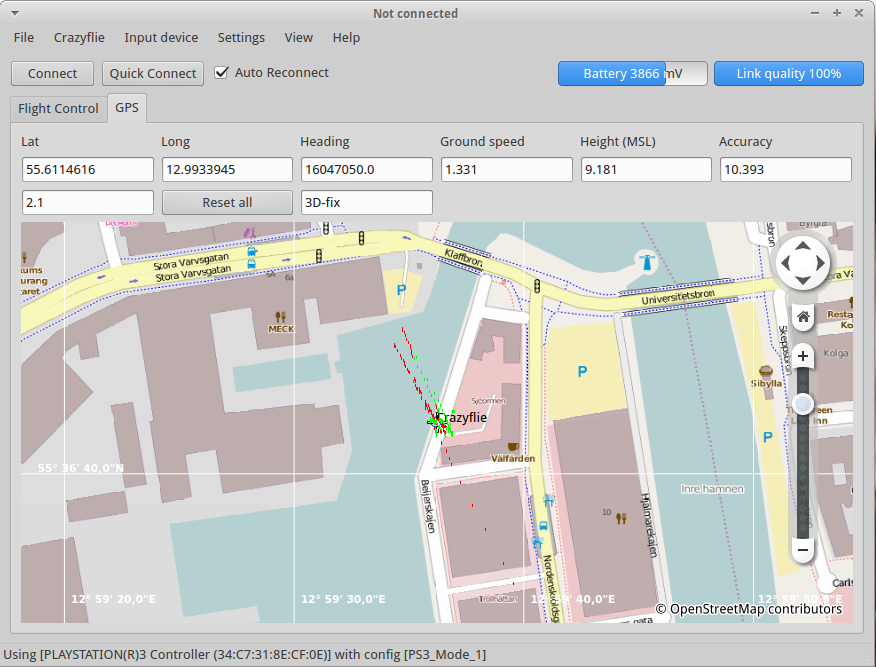It seems that many have received their Crazyflie 2.0 now. It is a very exciting time for us, tell us what you think about your Crazylie 2.0 and if you have any problems. We wish you Merry Christmas, a Happy New Year, and a lot of fun with your new Crazyflie 2.0!
Getting started
The instructions and documentation are not really as finished as we would like them to be but we hope it is good enough for everyone to get started. For convenience we have put together a sets of links to find the information easier.
Crazyflie 2.0 – Getting started
Crazyflie 2.0 – Wiki
Crazyflie 2.0 – FAQ
Crazyradio/Crazyradio PA – Wiki
Crazyradio/Crazyradio PA – Windows driver installation
Android App
iOS App
Expansion port
The expansion port is a core functionality and it is important that it is easy to work with. The hardware part of the expansion port allows to easily attach custom electronic to the Crazyflie 2.0, making it a very versatile platform. We want to bring this convenience to the firmware and software development as well. We are not really there yet but would like to share our ideas of how we think, but also as an inspiration and to get valuable feedback.
As you might know we have added One-Wire memories on all our expansion board so that CF2 is able to detect which expansion board is connected. The intent is to automatically initialize the expansion board driver when a board is detected so that the firmware can contain all the expansion board drivers. Other benefits are that the resources easier can be shared but also blocked if there are conflicts between boards.
Currently we are in a state where we have made a prototype of how we want the driver to look like and work. The example/mock-up driver we have put together is for the traffic light hack we have written about earlier. The driver would just declare which expansion board it is supporting and it would be loaded automatically. Also some enhancement to the parameter API would allow for more declarative and short code.
Things will be a little bit slow here at Bitcraze during Christmas period as we are focusing on support and on our families. This is however definitely one or our focus when we start 2015. We will create issues to track this work in the Crazyflie firmware bug tracker, contributions are welcome :).
Bluetooth support
We have also published the rest of the Crazyflie firmware, the nRF51 has firmware, bootloader and a ‘Master Boot Switch’. The STM32F4 has bootloader and firmware. The nRF51 bootloader and firmware supports bluetooth low energy using a proprietary stack from Nordic Semiconductor. This stack architecture should play well with open source software as it is completly isolated from the firmware, it runs on the background and is interfaced with syscall (ie. the same way a program communicates with an OS in computers), Nordic call that a Softdevice. The problem is that the supporting libs that allows to access the softdevice is currently proprietary and we do not have the right to publish it.
Currently you can compile the nRF51 firmware in ESB (Enhanced Shock Burst) mode (ie. to communicate with Crazyradio) out of the box. To compile with BLE support you should download the S110 Softdevice and nrf51_sdk from Nordic Semiconductor and this requires you to have one of the Nordic kit. We are in communication with Nordic to fix this situation and will keep you updated. One nice thing about the nRF51 is that the radio is well documented so one way or another this is going to be solved: either we can distribute supporting files for the Nordic stack, or we make our own stack ;-).
Virtual machine
The virtual machine for the Crazyflie 2.0 is on its way, but as we have run into some problems, it has been delayed a bit. Now most of the problems has been fixed and we hope to release it any day now.
